Cockroaches
IDENTIFY
Types of Cockroaches
What do cockroaches look like?
Cockroaches can measure over 50 mm (2 in) length, with tropical species tending to be larger than those found in other climates. Cockroaches have six legs, two antennae and some even have wings. However, most winged cockroaches are not particularly adept at flying. With flat, oval-shaped bodies, these pests are often oily to the touch and may be cool or warm, depending on the temperature of their environment. Cockroaches in the house are better at hiding than you are at finding them, and their eggs are naturally protected from many over-the-counter insecticides and are elusive when it comes to cockroach traps. Without special equipment, materials and know-how, pest control for cockroaches can be a losing battle. Read more about what a cockroach looks like.
Ants That Bite or Sting
Albino Cockroach
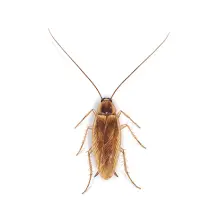
Brown Banded Cockroach
Supella longipalpa
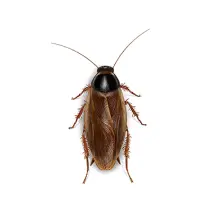
Field Cockroach
Blattella vaga
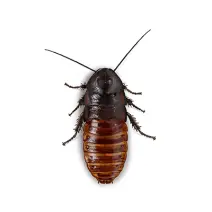
Madagascar Hissing Cockroach
Gromphadorhina portentosa
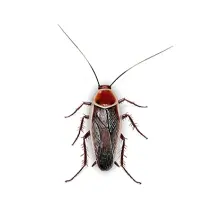
Pale-Bordered Field Cockroach
Pseudomops septentrionalis

Wood Cockroach
Parcoblatta pensylvanica

American Cockroach
Periplaneta americana

Lobster Cockroach
Nauphoeta cinerea

Florida Woods Cockroach
Eurycotis floridana

Madeira Cockroach
Rhyparobia maderae

Sand Cockroach
Sub-family Corydiidae

Asian Cockroach
Blattella asahinai

Cuban Cockroach
Panchlora nivea
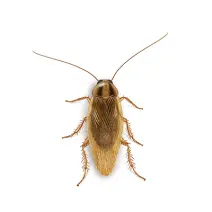
German Cockroach
Blattella germanica

Oriental Cockroach
Blatta orientalis
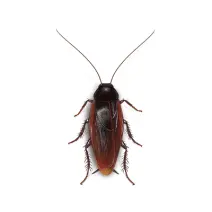
Smokybrown Cockroach
Periplaneta fuliginosa

Australian Cockroach
Periplaneta australasiae

Death Head Cockroach
Blaberus craniifer

Green Cockroach
Panchlora nivea
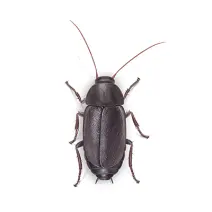
Pacific Beetle Cockroach
Diploptera punctata

Turkestan Cockroach
Blatta lateralis
How do I get rid of cockroaches?

What First Choice Exterminating Does
While a cockroach infestation is one of the most common pest problems, it’s also one of the most stubborn. Since every home is different, an First Choice Exterminating Pro can design a unique cockroach treatment program perfect for your needs.
Getting rid of roaches and keeping them out of your home or building is an ongoing process, not a one-time treatment. First Choice Exterminating’s exclusive Points of Service is a continuing cycle of 5 critical steps that provides an effective strategy for pest control of roaches and other pests.
- We Investigate: We’ll inspect your home from top to bottom, inside and out, for current or potential cockroach problems.
- We Protect: We’ll treat the perimeter of your structure with the appropriate materials, remove all accessible cockroach nests and use the safest methods available.
- We Fortify: We’ll do everything we can to keep roaches out--seal, caulk, plug, and secure gaps and cracks.
- We Keep Watch: We’ll treat the interior of your home and install pest monitors in critical areas such as kitchens, baths, utility rooms, and garages.
- We Report: We’ll always provide a detailed report of services rendered and recommendations to help keep your home free of cockroaches and other pests.
- We Follow up: We’ll stay in touch between our regularly scheduled visits and respond to any immediate needs.
First Choice Exterminating’s roach exterminators can provide the right solution for a cockroach infestation to keep roaches in their place… out of your home or business.
If you believe you have identified a cockroach infestation within your home or business, contact your local First Choice Exterminating branch to discuss inspection and customized solutions.
Frequently Asked Questions
People often blame a cockroach problem on poor housekeeping. While cleaning floors, kitchens, and bathrooms is useful and very important to reduce food sources used by cockroaches, they may get inside and cause an infestation for other reasons. These pests can hitch a ride on infested items brought inside, get indoors via cracks and gaps in the home’s exterior, enter through drains or sewer pipes and a few species of cockroaches can fly inside when attracted to lights.
While cockroaches are one of the most common pest problems, they are also one of the most stubborn. Infestations are hard to get rid of because the insects hide in a host of areas, breed quickly, have a very high reproductive potential and may develop resistance to pesticides. Cockroaches often taint food with E. coli and Salmonella bacteria, so it’s not safe to ignore these pests. Exposure to cockroach feces and the body parts of dead roaches over time can even trigger allergies and asthma.
The length of time it takes to rid your home of a cockroach infestation depends largely upon the species and size of the infestation. Many over-the-counter products that homeowners utilize often prove ineffective against a cockroach infestation. These pests are extremely adaptable and may even be resistant to some DIY cockroach extermination methods.
The ant life cycle has four distinct and very different life stages: egg, larvae, pupae and adult. This is known as complete metamorphosis. It generally takes from several weeks to several months to complete the life cycle, depending upon the ant species and environmental factors.
Eggs
Female cockroaches produce egg cases, known as oothecae. Oothecae contain many eggs and are enveloped by a protein substance that gradually hardens into a strong, protective casing. Some cockroach species drop the egg case, while other species carry it until the eggs are ready to hatch.
Nymph
Cockroach eggs hatch because of the combined pressure of the hatchlings within. Upon emerging from the egg case, or ootheca, this immature form of cockroach is known as a nymph or baby cockroach. Nymphs are bright white in color initially. They enlarge through the intake of air and will harden and darken within hours.
Cockroach nymphs are grayish-brown in color and darken with each progressive molt. The nymphal development to adult ranges in length from months to over a year. Cockroach nymphs are similar to their adult counterparts. Cockroach nymphs undergo a series of molts. They emerge as full adults from their final molt.
Adult
Once the nymph stage is complete, the adult cockroach comes on the scene. Adults of many species can be distinguished from nymphs by their larger size and the presence of wings. However, a few species of cockroach, like the Madagascar hissing cockroach, lack wings even as adults.
Eggs
Female cockroaches produce egg cases, known as oothecae. Oothecae contain many eggs and are enveloped by a protein substance that gradually hardens into a strong, protective casing. Some cockroach species drop the egg case, while other species carry it until the eggs are ready to hatch.
Nymph
Cockroach eggs hatch because of the combined pressure of the hatchlings within. Upon emerging from the egg case, or ootheca, this immature form of cockroach is known as a nymph or baby cockroach. Nymphs are bright white in color initially. They enlarge through the intake of air and will harden and darken within hours.
Cockroach nymphs are grayish-brown in color and darken with each progressive molt. The nymphal development to adult ranges in length from months to over a year. Cockroach nymphs are similar to their adult counterparts. Cockroach nymphs undergo a series of molts. They emerge as full adults from their final molt.
Adult
Once the nymph stage is complete, the adult cockroach comes on the scene. Adults of many species can be distinguished from nymphs by their larger size and the presence of wings. However, a few species of cockroach, like the Madagascar hissing cockroach, lack wings even as adults.
Cockroaches can wreak havoc on your home. To win the war in cockroach control, here’s what you should know:
- Entry: Cockroaches can enter your home in many different ways, from the outside through cracks and crevices, vents, sewer and drain pipes. We even bring them in on products like grocery bags, boxes, purses and on our person!
- Ideal Environment: Your home is an ideal breeding ground for certain pest species of cockroaches. With plenty of food, warmth, water and nesting sites, they can remain active all year round.
- Reproduction: Cockroaches reproduce quickly. For every one you see there can be many, many more hiding and multiplying behind your walls.
- Evasiveness: Because cockroaches typically are nocturnal, if you’ve seen one, you probably haven’t seen them all. The few cockroaches you see by day could mean they were likely forced out by overcrowding; a possible sign of severe infestation.
- Allergies/Asthma: The debris created by cast-off cockroach skins, dead bodies and droppings can aggravate allergies, especially in children and sensitive individuals.
- Do it yourself ineffectiveness: Cockroaches are better at hiding than you are at finding them, and their eggs are naturally protected from many over-the-counter insecticides. Without special equipment, materials and know-how, cockroach control can be a losing battle.

Cockroache Facts
Understanding Cockroach Problems
The more you know about cockroaches, the better you can predict and control their behavior. Here are some quick facts to help you on your way.
Classification
Cockroaches belong to Kingdom Animalia, Phylum Arthropoda, Class Insecta and Order Blattaria. Some species invade human dwellings and are considered pests.
Risk of Disease
The pest cockroaches can be carriers of various diseases because they are commonly found near waste deposits or in the kitchen where food is present.
Environmental Impact
Some cockroaches are beneficial to the environment as important recyclers of decaying organic material.
